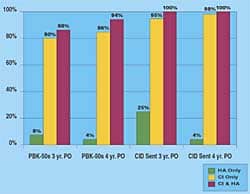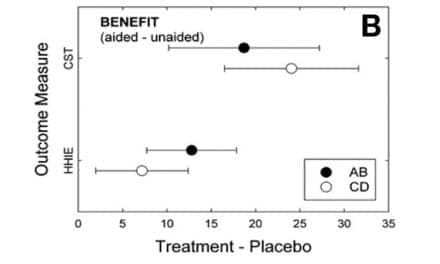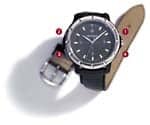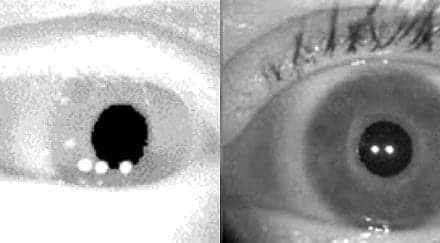Adolescence brings with it a desire to identify with and blend into teenage culture. Anything that makes adolescents feel “different” may be rejected out of hand by young men and women. Consequently, adolescents who are concerned about being marked “different” are often reluctant to wear hearing instruments. Further, youth often have to bear the brunt of inappropriate humor and ridicule.
In recent years, the authors have been fitting certain children with CIC hearing instruments. In addition to the CIC’s cosmetic appeal, the naturalness of its sound as well as other advantages have been reported. A project to evaluate the efficacy of CIC hearing aids in children was recently undertaken, fitting 15 patients between the ages of 2 and 16.
The stigma associated with the appearance of hearing instruments is well documented. However, it may be of greater consequence for many children.1-2 There is no question that the need to be assimilated into the teenage culture is a profound need and often may have significant effects on the future well-being of the individual. Jamieson wrote that “Hearing impairment may be best understood by considering it a social condition rather than a physical disability.”3 Bentler noted that “On rare occasion, well-intentioned parents will press the issue of a (more discreet!) canal-style or in-the-ear (ITE) hearing aid. The ITE style is not widely used with children…three primary considerations were: 1) frequency of recasing, 2) poor/no telecoil response, and 3) no provision for direct audio input.”4
In our 37 years of clinical experience fitting hearing instruments, we have found children—particularly teenagers—very reluctant to wear a hearing aid or any prosthesis which would make them appear different from their peers. Sheetz5 offered another perspective relative to children:
“During ages 6-11 years, the hearing handicapped (or deaf) child may encounter several stumbling blocks. The parents of such children may withdraw from the child, the child’s educational experience may prove deficient to that of the child’s hearing peers, and society may label the child with a stigma. Due to these handicapping conditions, the child may emerge from this stage with strong feelings of inferiority. During adolescence (ages 11-18 years), the very essence of adolescence constitutes a tremendous change in the child. Psychologically and physiologically the child changes from the child to the young adult. The deaf (or hearing handicapped) adolescent who is searching for this identity may find that their level of stress is increasing. They are then faced with the realization that they are different and that they will never be a fully functioning “hearing member” of the community. In addition, the young individual must determine if they want to associate primarily with the “Deaf’ community or the “normal hearing world” or fluctuate between the two.”5
The development of the completely-in-the canal (CIC) hearing instrument presented an exciting alternative to fitting hearing-impaired children who will not wear behind-the-ear (BTE), ITE, or in-the-canal (ITC) hearing instruments. However, there are several considerations which have dissuaded dispensing professionals from exploring the CIC as a viable option for children:
Cost: The cost of a CIC may be double—or more—that of a BTE.
Continued expense after initial cash outlay: The tympanic ring continues to grow through adolescence, and into the late teens and early twenties, indicating the potential for numerous “reshellings” of the CIC.
Health: Children, particularly pre-to-early teens, are more susceptible to outer and middle ear infections than adults. Would the CIC prove to be a greater risk than the BTE?
Fitting difficulties: There is no question that CICs are more challenging to fit than other styles of hearing instruments. Further, the younger the child, the greater the challenge when making an impression for CICs.
Damage: Are the CICs more vulnerable to trauma (dropping, a blow to the head, etc.) than other hearing aids?
Loss: It is possible that the small size of CICs place them at greater risk for being lost by children. Although not initially a consideration, we did have a child (age 2.6 years) drop his aids in the grass so he could run through a sprinkler. Both aids were found undamaged, however. Another youth lost one CIC (although it should be pointed out that BTEs are also “occasionally” lost by youngsters).”
Early reports on our findings6,7 on the use of CICs for children have been met with some skepticism, but overall the predominant reactions from professionals have been excitement and support. In fact, the support generated by this project was surprising, and has led us to publish our experiences here in order to open a dialog relative to the the use of CICs with children. (Authors’ Note: Because this work is based on clinical observation and interviews with the children and their parents, we do not claim that this is a scientific study. Much of the information obtained and reported here is anecdotal. Report cards were submitted by some (but not all) of the parents.)
Study Purpose
The purposes of this project were:
- To explore the benefits of CICs for children.
- To investigate whether or not children who have refused to wear hearing aid styles traditionally prescribed for children (i.e., BTEs and ITEs) would be willing to wear the CICs instead.
- To obtain tangible evidence of differences in CIC wearing times compared to non-CIC wearing times.
- To evaluate the long-term effects of CIC hearing aids in a population whose tympanic ring has not fully matured and continues to mature.

Fig. 1. The 2-year-old boy with his hearing instrument.

Fig. 2. Composite audiograms for all 15 children showing mean
thresholds and standard error for each threshold.
Methods
Fifteen children (8 males, 7 females) between the ages of 2 and 16 years old (mean = 11.7 years) were fitted with CIC hearing instruments (Fig. 2). The criteria for a subject’s inclusion in the study were as follows:
- The child had to have a bilateral sensorineural hearing loss ranging from mild to moderately severe. (Note: one child had a severe loss in the high frequency).
- The child had to have shown reluctance and/or resistance to wearing his/her current hearing instruments in public, or at all.
- An absence of disease or other otologic indications which would preclude fitting the ear with a CIC hearing aid.
- The ability to speak English.
- Good general health.
- The parents had to agree to fill out questionnaires before the fitting, and at 6 months and 1 year after the fitting of the hearing aids. If possible, they were also asked to provide tangible evidence of changes in the child’s behavior, grades, etc. The questionnaire was straightforward and the questions are listed in Table 1.
- The parents had to agree to be interviewed with their child at 6 months, 1 year and 2 years after the fitting.
- Several children and their parents were interviewed on videotape.
| 1 Are the hearing aids being worn more frequently than the previous aids?
2 If so, how much more? 3 If not, why not? 4 Since being fitted has there been a change in your (your child’s): 5 Do you have any tangible evidence for your answers? |
| Table 1. Questions asked parents at 6 months and 1 year after the fitting. |
Procedure
All children received a hearing evaluation and an otologic evaluation. If they qualified for the study and agreed to participate, they received a hearing aid evaluation. All children owned BTE or ITE hearing aids. The parents of each child received monthly telephone calls in addition to the follow-up visits at 6 months, 1 year and 2 years. After the end of the first year, a comprehensive assessment/interview was conducted.
Results
Results were evaluated in three ways prior to and following CIC use:
- Aided vs. unaided tests.
- Interviews with the parent and child.
- Acquisition of tangible support, including report cards, awards and notes sent to parents.
Because of the small number of individuals (15) in this study, and the manner in which the information was evaluated, the results are considered anecdotal. All children were fitted with the Starkey Sequel CIC. Three children (#4, #14, #15) were not fitted with programmable aids because their canals were too small, or they were too young (#4 = both). Fig. 2 is a composite audiogram for the group showing the mean loss at each frequency and the standard error. All losses were sensorineural and ranged from mild to severe.
The outcomes of this study were overwhelmingly successful. All children accepted their CIC hearing instruments and truly had positive responses to the devices. Because the interviews were so positive and consistent, it would be repetitive to print the endorsements of the CICs here. Therefore, only a few of the more “universal-type” comments are shown below, along with the comments of one patient who did not become a full-time wearer, but wore her instruments only when she felt “the need.”
The mother of the youngest child involved in the study—a two year old—reported that he wore the CICs “from the day we put them on.” Prior to the fitting, either he or his normal-hearing identical twin would pull his BTEs off as soon as they were placed on him. She also reported that his elder brother was happy because he “finally sounds like he speaks English!”
A 15-year-old male, having trouble in school, 100-lbs. overweight and “grumpy,” lost weight (80+ lbs.) soon after receiving the CICs; he became “outgoing,” and would “not leave the house without his aids.” This adolescent young man said, “Now I know what I’ve been missing.” His pure tone averages (PTAs) were 57 dB AD and 90 dB AS. Word recognition scores were 84% AU.
A 14-year-old male stated that he was “more confident” and that his grades improved because of his CICs. The interviewer pressed him, saying that he was a good student with good grades before he had the CICs, to which the student replied, “[My grades] were okay, A’s and B’s, but I never had straight A’s!” His PTAs were 63 dB AD, 42 dB AS, and he had word recognition scores of 88% AU.
The only patient who did not wear her CICs all the time was a 16-year-old female (#l1). She wore her CICs at home to watch TV and listen to music, because her parents complained about the loudness. She also wore her CICs whenever she used the telephone. Her loss was bilateral and symmetrical and ranged from 30-55 dB. When asked why she didn’t wear her aids at school, she responded that “They’re too visible. If someone is behind you, they can see them and I wear my hair in a ponytail.” Her mother reported that she (the mother) liked the CICs but wished “they could be smaller, like contacts”.
The final child we would like to report is a 10 year old (#14) who had been wearing digital BTEs. His father also had digital BTEs of the same make and model. Because his canals were too small, the child was not fitted with a programmable circuit. When his father asked how the CICs compared to the digital hearing aids, he replied, in our presence, “Actually better, Dad, because now I hear in here (pointing to the center of his head), instead of out here (pointing to his ears).”
Discussion
Preliminary information on this work has been reported at several meetings6,7, accompanied by a video of some of the interviews. The full impact of the success of this approach to amplification cannot be overstated. Whether anyone likes it or not, our society places a high emphasis upon appearance, and teens have always placed a high value on peer acceptance and not looking different. The CIC offers a clear and obvious alternative for the child who is having difficulty accepting their hearing loss or trying to “fit in.” An unexpected benefit was the 2-year-old whose BTE would be pulled off by him or his brother. He could not get his CIC out, and he didn’t even try.
Relative to the question of recasing as a function of growth, not one CIC in this study required recasing because of feedback or discomfort for all 30 ears. There was recasing necessary for five CICs, but four of these were due to damage and one aid was lost.
Since the 1940s, manufacturers have worked toward miniaturization and improved fidelity. The CIC is not the last stop, but it is a pleasant alternative for youth who have enough trials to experience going through adolescence in our society without the added burden of “obvious” hearing aids. In the authors’ view, CICs should be considered as an option for children who will not wear their hearing instruments, or who are dismayed because of the “visibility” of their amplifying systems. The “naturalness” of the signal, perceived in the head as opposed at the periphery, adds another dimension to the advantages of CICs over other hearing instruments. While it is true that the CIC is not adaptable to FM systems, we heard no complaints from parents, children, or teachers relative to this function. Additionally, the question of “poor/no telecoil response” was of little consequence since all youths reported better telephone reception when wearing the CIC.
Conclusion
It appears that CIC hearing instruments hold promise as an effective amplification option for children, especially those who refuse to wear other, more visible styles of hearing instruments. Of all the objections listed previously in this paper (i.e., cost, reshelling/refitting, concerns about otitis media, fitting difficulties and greater potential for loss and damage), it appears that the health and cost aspects remain as possible objections to fitting children with CICs. The health aspect was not fully addressed in this article (i.e., none of the children presented with otitis media or otitis externa). In terms of cost, the authors encourage manufacturers to find ways to make CIC hearing instruments more cost-effective for youth—if not for all hearing aid users.
While this study relied on anecdotal reports from the subjects and their parents, the effectiveness of CICs and the eagerness with which children embraced these devices as a solution for their hearing problems left little doubt that fitting children with CICs needs to be considered as an option by hearing health care professionals.
Acknowledgement
This study was supported by a grant from Starkey Laboratories, Minneapolis, MN.
Richard H. Nodar, PhD, is a retired staff member of the Otolaryngology and Communicative Disorders Dept. at the Cleveland Clinic Foundation. Tony H. Sahley, PhD, is associate professor of the Speech & Hearing and Biology Departments at Cleveland State University.
Correspondence can be addressed to HR or Richard Nodar, PhD, Cleveland Clinic Foundation, 9500 Euclid Ave. (EE40), Cleveland, OH 44195; email: [email protected].
References
1. Ross M, Brackett D & Maxon A: Assessment and Management of Mainstreamed Hearing-Impaired Children: Principles and Practices. Austin, TX: Pro-Ed, 1989.
2. Flexer C, Wray D & Ireland J: Preferential sealing is NOT enough: Issues in classroom management of hearing impaired students. Lang-Speech Hear Serv Schools 1990; 21: 177-182.
3. Jamieson J: The impact of hearing impairment. In J Katz’s (ed) Handbook of Clinical Audiology. Baltimore: Williams & Wilkins, 1994: 596.
4. Bentler R: Amplification for the hearing impaired child. In G Alpiner & P McCarthy’s (eds) Rehabilitative Audiology: Children and Adults. Baltimore: Williams & Wilkins, 1993: 73.
5. Scheetz NA: Orientation to Deafness (2nd Edition). Boston: Allyn & Bacon, 2001: 1-26.
6. Nodar RH: The completely-in-the-canal hearing aid in children. Presentation at the XXIII Intl. Congress of Audiology in Bari, Italy: June 1996.
7. Nodar RH: Fitting the completely-in-the-canal hearing aids in children: Update. Presented at the XXV Intl. Congress of Audiology in The Hague, The Netherlands: August 2000.





